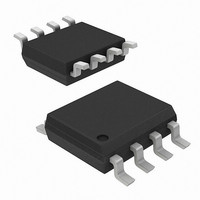A3425ELTR-T Allegro Microsystems Inc, A3425ELTR-T Datasheet - Page 8

A3425ELTR-T
Manufacturer Part Number
A3425ELTR-T
Description
IC SW HALL EFFECT BIPO 8-SOIC
Manufacturer
Allegro Microsystems Inc
Type
Bipolar Latchr
Specifications of A3425ELTR-T
Sensing Range
35G Trip, -35G Release
Voltage - Supply
3.3 V ~ 18 V
Current - Supply
6mA
Current - Output (max)
20mA
Output Type
Digital, Open Drain
Features
Ultra Sensitive
Operating Temperature
-40°C ~ 85°C
Package / Case
8-SOIC (0.154", 3.90mm Width)
Magnetic Type
Bipolar
Operating Supply Voltage (min)
3.3V
Operating Supply Voltage (typ)
5/9/12/15V
Operating Supply Voltage (max)
18V
Mag Sensor Operate Point (g)
35Gs
Mag Sensor Release Point (g)
-35Gs
Mag Sensor Hysteresis(g)
16Gs
Package Type
SOIC
Pin Count
8
Mounting
Surface Mount
Operating Temp Range
-40C to 85C
Operating Temperature Classification
Industrial
Lead Free Status / RoHS Status
Lead free / RoHS Compliant
Available stocks
Company
Part Number
Manufacturer
Quantity
Price
Part Number:
A3425ELTR-T
Manufacturer:
ALLEGRO/雅丽高
Quantity:
20 000
A3425
Chopper-Stabilized Technique
When using Hall effect technology, a limiting factor
for switchpoint accuracy is the small signal voltage
developed across the Hall element. This voltage is dis-
proportionally small relative to the offset that can be
produced at the output of the Hall device. This makes
it diffi cult to process the signal and maintain an accu-
rate, reliable output over the specifi ed temperature and
voltage range.
Chopper stabilization is a unique approach used to
minimize Hall offset on the chip. The patented Allegro
technique, dynamic quadrature offset cancellation,
removes key sources of the output drift induced by
thermal and mechanical stress. This offset reduction
technique is based on a signal modulation-demodula-
tion process. The undesired offset signal is separated
from the magnetically induced signal in the frequency
domain through modulation. The subsequent demodu-
lation acts as a modulation process for the offset,
causing the magnetically-induced signal to recover its
original spectrum at the baseband level, while the dc
offset becomes a high-frequency signal. Then, using a
low-pass fi lter, the signal passes while the modulated
dc offset is suppressed.
The chopper stabilization technique uses a 170 kHz
high-frequency clock. The Hall element chopping
Chopper stabilization circuit (dynamic quadrature offset cancellation)
Regulator
Ultra-Sensitive Dual-Channel Quadrature
Functional Description
occurs on each clock edge, resulting in a 340 kHz
chop frequency. This high-frequency operation allows
for a greater sampling rate, which produces higher
accuracy and faster signal processing capability. This
approach desensitizes the chip to the effects of ther-
mal and mechanical stress. The disadvantage to this
approach is that jitter, also known as 360° repeatability,
can be induced on the output signal. The sample-and-
hold process, used by the demodulator to store and
recover the signal, can slightly degrade the signal-
to-noise ratio. This is because the process generates
replicas of the noise spectrum at the baseband, causing
a decrease in jitter performance. However, the improve-
ment in switchpoint performance, resulting from the
reduction of the effects of thermal and mechanical
stress, outweighs the degradation in the signal-to-noise
ratio.
This technique produces devices that have an
extremely stable quiescent Hall element output volt-
age, are immune to thermal stress, and have precise
recoverability after temperature cycling. This tech-
nique is made possible through the use of a BiCMOS
process, which allows the use of low-offset and low-
noise amplifi ers in combination with high-density
logic integration and sample-and-hold circuits. This
process is illustrated in the following diagram.
Amp
Hall-Effect Bipolar Switch
Low-
Pass
Filter
115 Northeast Cutoff, Box 15036
Allegro MicroSystems, Inc.
Worcester, Massachusetts 01615-0036 (508) 853-5000
www.allegromicro.com
7
















